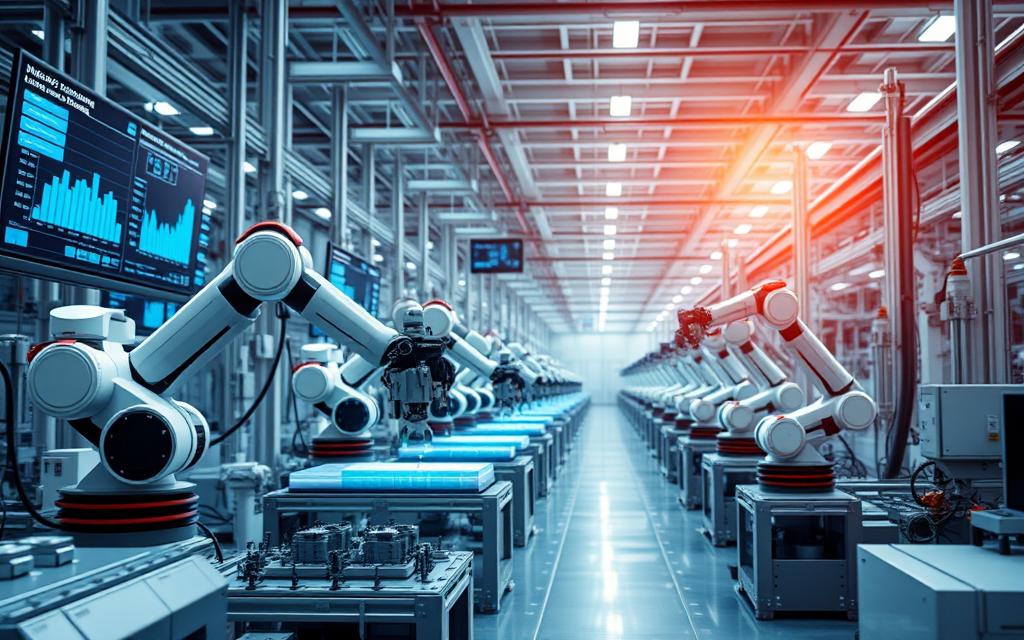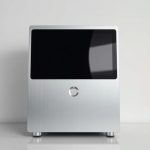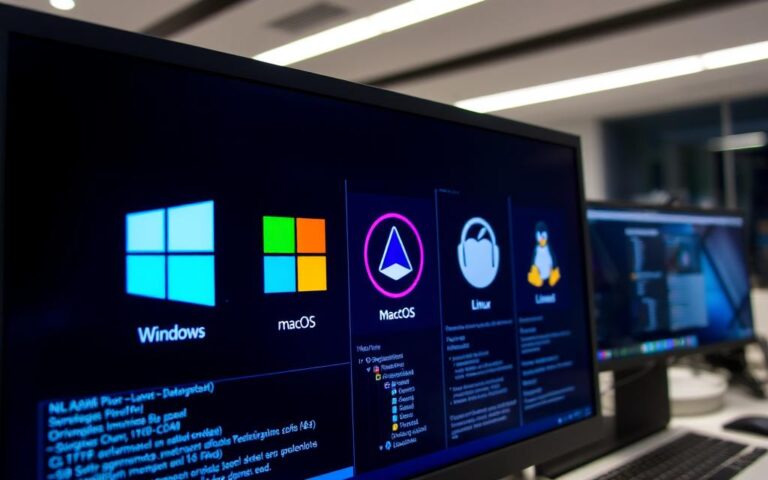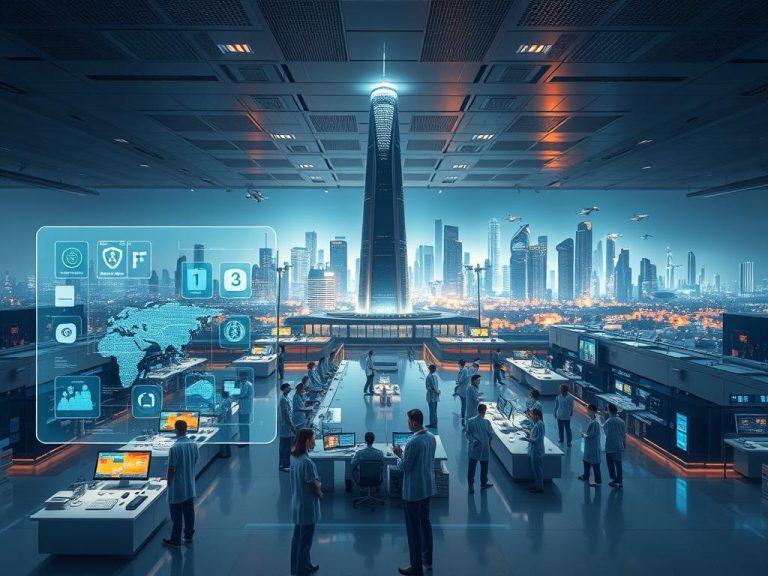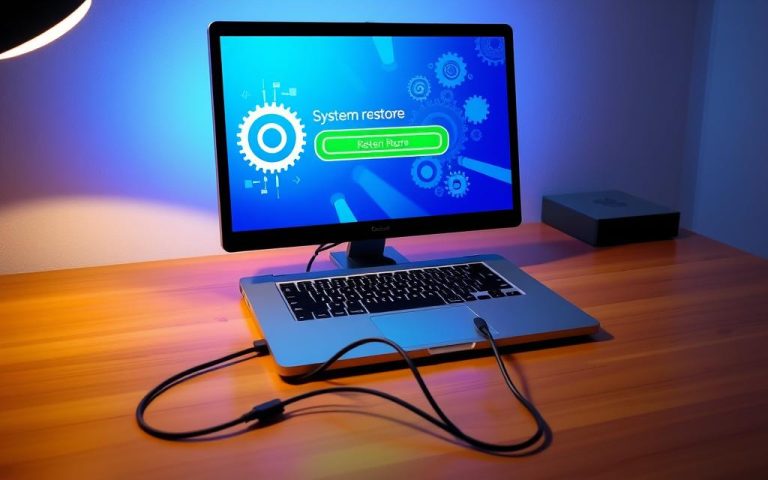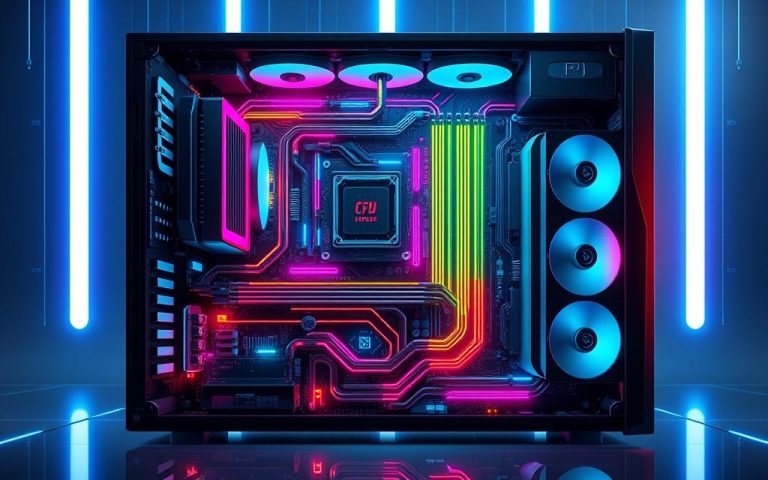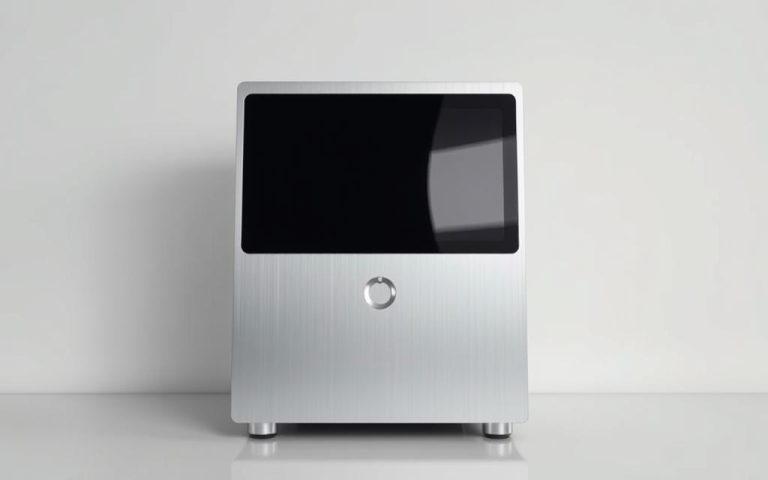What Is a Computer-Integrated Manufacturing System? Explained
Computer-integrated manufacturing, or CIM, is a new way to make things. It uses computers to control and link all parts of making things. This makes making things better, faster, and more precise.
By using CIM systems, companies can make their work flow smoother. They can also make their products more consistent.
In the world of computer-integrated manufacturing, CIM systems aim to make production better. They cut down on mistakes and waste. This leads to higher quality products.
This method is popular in car, plane, and ship making. It shows how CIM can really help.
Looking into CIM, we see it can change how things are made. It helps businesses work better, faster, and cheaper. This is thanks to CIM systems and automation.
Understanding Computer-Integrated Manufacturing Systems
Computer-Integrated Manufacturing (CIM) has been around for decades. It’s all about linking the whole manufacturing process together. This uses systems, data sharing, and new ways of managing things. It makes things run smoother and is key to today’s manufacturing.
The idea of CIM started in the 1970s with digital manufacturing. Over time, it’s grown to include things like computer-aided design (CAD) and industrial robotics. These parts work together to make a smooth and efficient process.
Key Components of CIM
Some important parts of CIM are:
- Computer-Aided Design (CAD)
- Computer-Aided Manufacturing (CAM)
- Industrial Robotics
- Computer Numerical Control (CNC)
- Programmable Logic Controllers (PLC)
These parts help make CIM work. They help automate and improve different parts of making things. Knowing about CIM and its parts helps companies make things better, cheaper, and of higher quality.
Benefits of CIM
Using CIM brings many benefits. It makes things more efficient, cuts down on mistakes, speeds up making things, and makes products better. It helps companies keep up in a fast-changing world and enjoy the benefits of making things automatically.
| Benefits of CIM | Description |
|---|---|
| Increased Efficiency | Automation of manufacturing processes |
| Reduced Human Errors | Minimization of manual errors |
| Accelerated Production Cycles | Faster production times |
| Improved Product Quality | Enhanced quality control |
The Evolution of Manufacturing Technology
The idea of digital manufacturing started in the 1970s. Dr. Joseph Harrington’s book, Computer Integrated Manufacturing, was key. Manufacturing technology has grown, adding industrial automation and production optimization. These changes have made making things more efficient, better quality, and cheaper.
Important parts of manufacturing tech include:
- Computer-Aided Design (CAD)
- Computer-Aided Manufacturing (CAM)
- Computer-Integrated Manufacturing (CIM)
- Flexible Manufacturing Systems (FMS)
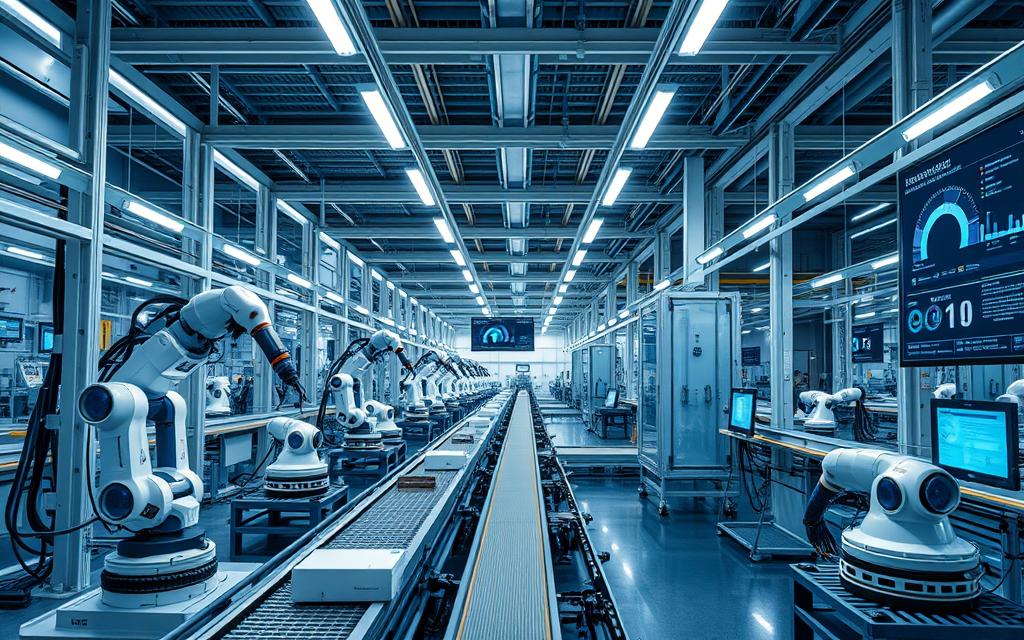
The mix of manufacturing technology, industrial automation, and production optimization has changed how we make things. It helps companies keep up with market changes and stay ahead. Using these tools, makers can work better, spend less, and make products that customers love.
Core Elements of Computer-Integrated Manufacturing
Computer-integrated manufacturing systems have key parts that work together. These include CAD, CAM, industrial robotics, and automated material handling. CAD helps design products digitally. CAM makes products with computer-controlled machines.
Industrial robotics automates tasks like assembly and checking. Automated material handling moves materials and products around the factory. Together, these parts make production faster, cheaper, and better.
Key Components of Computer-Integrated Manufacturing
The main parts of computer-integrated manufacturing are:
- CAD systems for designing and developing products
- CAM systems for planning and making products
- Industrial robotics for automating tasks
- Automated material handling for managing materials
These parts make the manufacturing process smooth and efficient. Using CAD, CAM, robotics, and material handling, makers can make products faster, cheaper, and better.
Using computer-integrated manufacturing brings many benefits. It makes production more efficient, cuts costs, and improves product quality. By investing in these systems, makers can keep up with the fast global market.
| Component | Description |
|---|---|
| CAD | Computer-aided design for product development |
| CAM | Computer-aided manufacturing for production planning |
| Industrial Robotics | Automated manufacturing tasks, such as assembly and inspection |
| Automated Material Handling | Efficient material management and transportation |
Benefits of Implementing CIMS in Modern Industries
Computer-Integrated Manufacturing Systems (CIMS) bring many benefits to modern industries. They improve manufacturing efficiency and production optimization. CIMS automates tasks and links systems and processes, cutting costs and improving schedules.
Some key benefits of CIMS include:
- Streamlined production flow
- Easier training facilities
- Increased flexibility with new products
- Controlled data flow among units
Studies show CIMS can greatly improve production optimization. Companies see shorter lead times and better product quality. It also helps them quickly adapt to market changes, making them more competitive.
The benefits of CIM extend beyond just manufacturing. It links business functions with production, boosting overall performance and profits. In today’s competitive global market, CIMS is key for companies to succeed and grow.
Essential Components of a Computer Integrated Manufacturing System
A computer-integrated manufacturing system has key parts like hardware, software, and network architecture. These work together for a smooth and efficient production. The hardware includes machines and robots, while software manages the process.
The network architecture is about how different parts talk to each other. This lets businesses monitor and control production in real-time. They can quickly adapt to changes and improve operations. This leads to better productivity, cost savings, and happier customers.
Hardware Infrastructure
The hardware is the base of a CIM system, providing the tools for making products. It includes machines and robots that automate tasks. This reduces errors and speeds up production.
Software Solutions
Software is key in managing the manufacturing process. It handles tasks like production, inventory, and quality control. By streamlining operations, software boosts productivity and efficiency. This results in cost savings and happier customers.
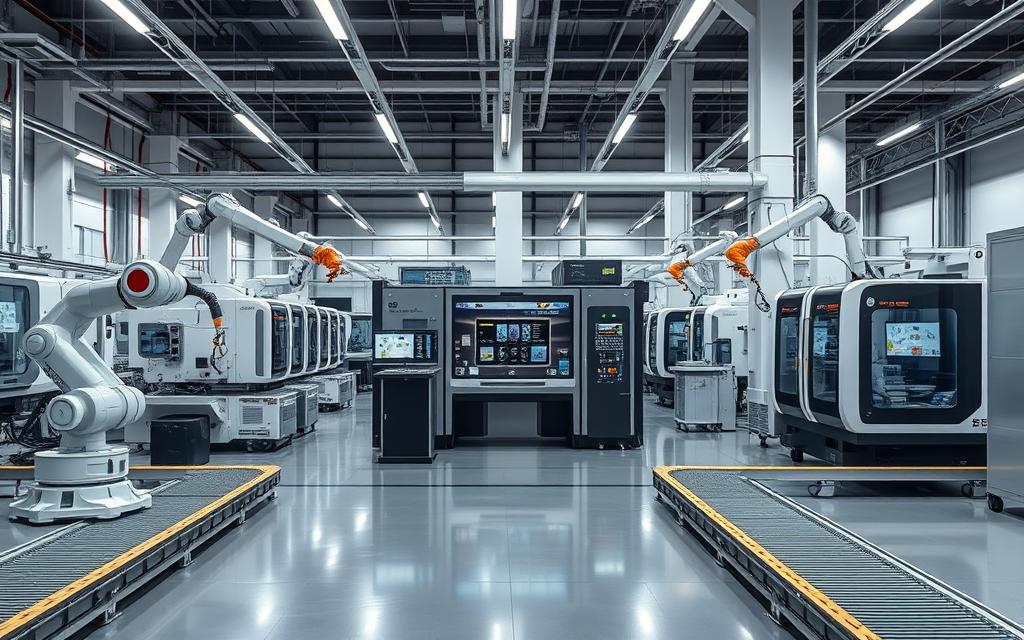
Network Architecture
The network architecture is the heart of a CIM system, connecting different parts. It allows for real-time monitoring and control. This lets businesses quickly adapt to changes and improve operations.
Integration Challenges and Solutions
Setting up Computer-Integrated Manufacturing (CIM) systems can be tough. Many integration challenges need to be tackled. One big issue is keeping computers safe from damage, which is common in industrial places. To solve this, using protective cases and safety steps can help keep computers and other gear safe.
Another hurdle in CIM implementation is careful planning and action. It’s important to know what the organization needs, choose the right CIM tools and methods, and figure out the costs. A smart manufacturing automation plan can help companies work better together, save time, and cut costs.
Some key things to think about for a good CIM setup include:
- Understanding what the organization needs and picking the right CIM tools and methods
- Looking at the cost and seeing if it’s worth it
- Creating a detailed plan for putting everything together
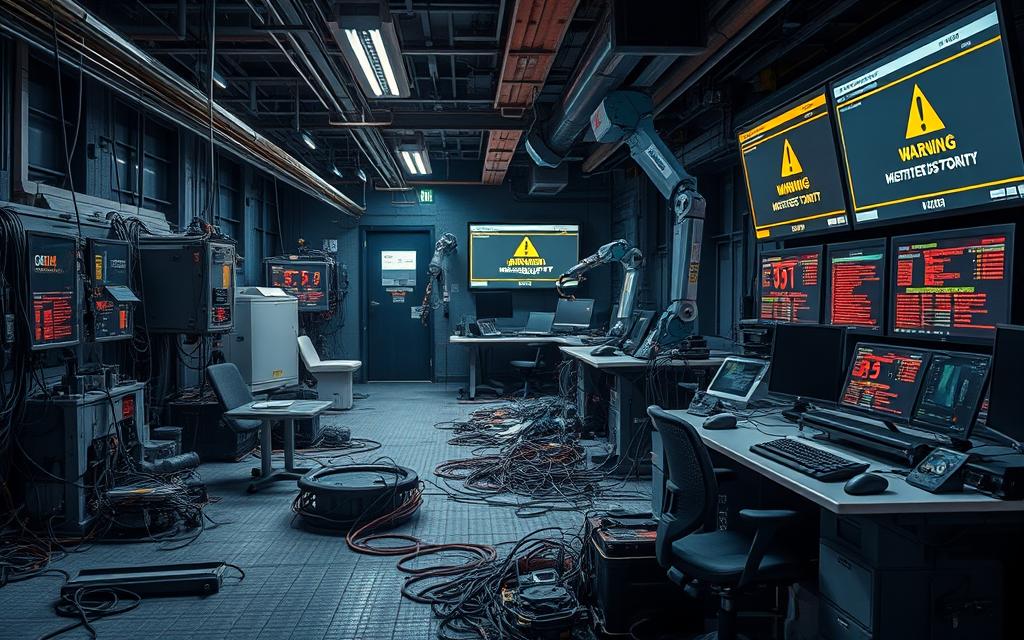
By tackling these issues and thinking things through, companies can make CIM work well. This leads to better efficiency, more productivity, and being more competitive.
| Challenge | Solution |
|---|---|
| Damage prevention | Protective enclosures and safety measures |
| CIM implementation | Careful planning and execution |
| Manufacturing automation | Comprehensive plan for integration and execution |
Real-World Applications Across Industries
Computer-integrated manufacturing (CIM) is used in many fields like automotive manufacturing, aerospace production, and electronics assembly. It helps companies make their production smoother, cheaper, and better. In car making, CIM is key for creating vehicles and parts like engines and transmissions with great precision.
In the aerospace production world, CIM is vital for making aircraft and spacecraft parts. This includes wings and the body of the plane, needing complex shapes and exact fits. CIM has made these industries more productive, efficient, and quality-focused. It also lets companies adapt fast to new market needs and customer wishes.
- Improved product quality and accuracy
- Increased productivity and efficiency
- Reduced production costs and lead times
- Enhanced flexibility and responsiveness to changing market demands
CIM has changed the game in manufacturing, making it possible to produce top-notch products efficiently. As technology keeps advancing, we’ll see CIM’s role grow in fields like automotive manufacturing and aerospace production.
Implementation Strategy and Best Practices
Setting up a Computer-Integrated Manufacturing (CIM) system needs a solid plan and a clear execution framework. The planning phase is key to setting the project’s goals, finding the right tools and people, and making a detailed schedule. A good CIM setup can boost productivity, quality, and customer happiness.
Integrating technologies like Computer-Aided Design (CAD), Computer-Aided Manufacturing (CAM), and robotics is vital. This makes the manufacturing process smoother and more efficient. For example, CAD/CAM can cut design costs by 15 to 30 percent and shorten lead times by 20 to 60 percent.
- Make a detailed project plan and schedule
- Find and assign the right tools and people
- Train and support your team
- Keep an eye on how the system is doing
By sticking to these tips and focusing on the planning phase and execution framework, companies can make the most of CIM. They’ll see better productivity, quality, and customer satisfaction.
| Benefits of CIM Implementation | Percentage Improvement |
|---|---|
| Decrease in design costs | 15-30% |
| Reduction in overall lead time | 20-60% |
| Cut in work-in-process inventory | 30-60% |
Future Trends in Computer-Integrated Manufacturing
The future of computer-integrated manufacturing (CIM) is set to change the game with new tech like artificial intelligence and the Internet of Things (IoT). These advancements will make manufacturing more efficient, productive, and cost-effective. They will also cut down on production time.
Robots are set to play a big role in CIM’s future. They will help solve labor shortages and boost efficiency. Industry 4.0 has already seen a 10 to 30% increase in manufacturing output thanks to automation and AI. Robots will also keep workers safe by handling dangerous tasks.
The benefits of CIM are many. Some key advantages include:
- Increased production efficiency through reduced manual labor
- Lower costs and enhanced productivity
- Improved product quality through real-time monitoring and control
As the industry grows, keeping up with CIM’s latest trends is vital. By adopting these new technologies, manufacturers can stay competitive. The future of manufacturing looks bright with CIM and automation leading the way.
Measuring ROI and Performance Metrics
To check how well computer-integrated manufacturing systems work, we need to look at their return on investment (ROI) and performance. We use financial signs like cost savings and revenue growth to see if CIM systems are worth it. Calculating ROI right is key to knowing the financial gains from CIM systems.
When it comes to how efficient CIM systems are, we look at things like how much they produce and how fast. We also check the quality of what they make, like how many defects there are and how happy customers are. Real-time monitoring and data analysis help us see how well CIM systems are doing.
Some important performance metrics include:
- Production capacity
- Inventory turnover
- Defect rate
- Customer satisfaction
By looking at these metrics, companies can find ways to get better results from their CIM systems. It’s important to keep checking ROI and performance regularly. This makes sure CIM systems are helping the business meet its goals and bringing in the expected profits.
| Metric | Target Value | Actual Value |
|---|---|---|
| Return on Investment (ROI) | 5-10% | 4.3% |
| Business Impact | 10-20% | 14.4% |
Conclusion
The manufacturing industry is changing fast, and CIM systems are key to this change. These systems have already made a big impact, boosting efficiency and quality across many sectors. They automate tasks, streamline operations, and use resources better, helping manufacturers stay ahead and please their customers.
The future of CIM looks even brighter. New technologies like AI, machine learning, and IIoT will help manufacturers use data to improve their processes. This will cut costs, reduce waste, and increase output and profits.
To make the most of CIM, manufacturers need a smart plan. They should invest in technology, train their teams, and always look for ways to get better. This will help them succeed in the fast-changing world of manufacturing. As CIM becomes more common, those who adapt and innovate will lead the way to manufacturing excellence.
FAQ
What is computer-integrated manufacturing (CIM)?
Computer-integrated manufacturing (CIM) is a new way to make things. It uses computers to manage all parts of making products. This makes making things better, faster, and more precise.
What are the core concepts and key components of CIM?
CIM’s main ideas are about using computers to link everything in making things. It uses systems, data sharing, and new ways of managing to make things better. The main parts are computer-aided design (CAD), computer-aided manufacturing (CAM), and robots.
What are the benefits of implementing CIM systems in modern industries?
CIM systems make making things better and cheaper. They help with planning and reduce time when things stop working. This leads to better products and helps make decisions based on real-time data.
What are the essential components of a CIM system?
A CIM system needs hardware like machines and robots, software to control the process, and a network to share data. These parts work together to make things efficiently.
What are the integration challenges and solutions when implementing CIM systems?
One big challenge is keeping computers safe in a factory. To solve this, use protective cases and safety steps. Also, make sure to back up data regularly to avoid losing it if something breaks.
What are the real-world applications of CIM across various industries?
CIM is used in many areas like car making, plane parts, and electronics. In car making, it helps make cars and parts. For planes, it makes parts for aircraft and spacecraft. In electronics, it assembles and makes electronic parts.
How can the return on investment (ROI) and performance metrics of CIM systems be measured?
To see if CIM systems work, look at money saved and how much more money they make. Also, check how fast and well things are made. And see how good the products are by looking at defects and customer happiness.
What are the future trends in computer-integrated manufacturing?
CIM’s future will bring in new tech like artificial intelligence and the Internet of Things. These will make making things even better and cheaper. They will also help make new products and services, and new ways to make money.

